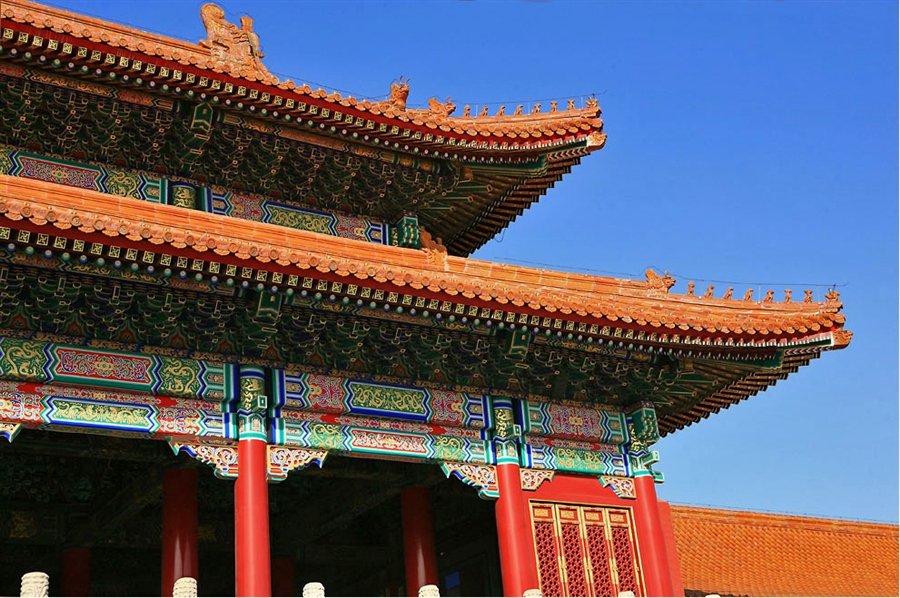#4758. Imperial Facade: Multi-tiered Roof and Polychromatic Decoration of a Traditional Chinese Palace Pavilion
The image showcases a magnificent example of traditional Chinese architecture — the facade of a palace pavilion, likely part of the Forbidden City complex in Beijing. The structure demonstrates classic elements of imperial architecture from the Ming and Qing dynasties.
Particularly noteworthy is the multi-tiered curved roof with characteristic upturned corners, covered with glazed golden-orange tiles. Small figures of mythical creatures are placed along the roof ridges — a traditional element meant to protect the building from evil spirits and symbolizing the imperial status of the structure.
The facade is adorned with rich polychromatic decorations in traditional style, predominantly using blue, green, red, and gold colors. Distinctive geometric and floral patterns frame the structural elements of the building. Especially prominent are the red columns supporting the structure and the intricately painted details of the ceiling under the eaves — the so-called "dougong" (bracket system).
The facade combines functionality and symbolism: the vibrant color palette is not only aesthetically appealing but also carries deep cultural symbolism, where each color and element has its own significance in Chinese philosophy and cosmology.
